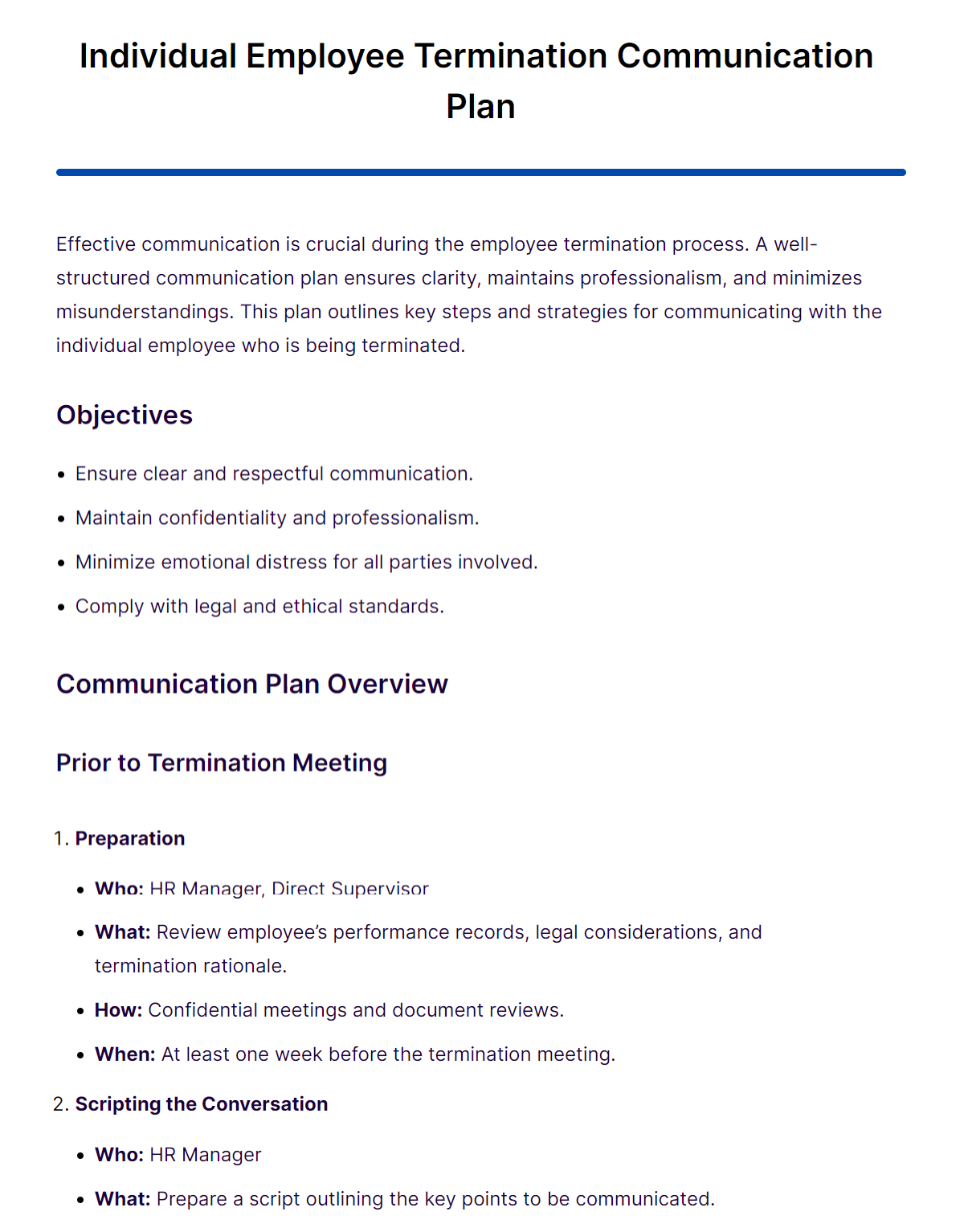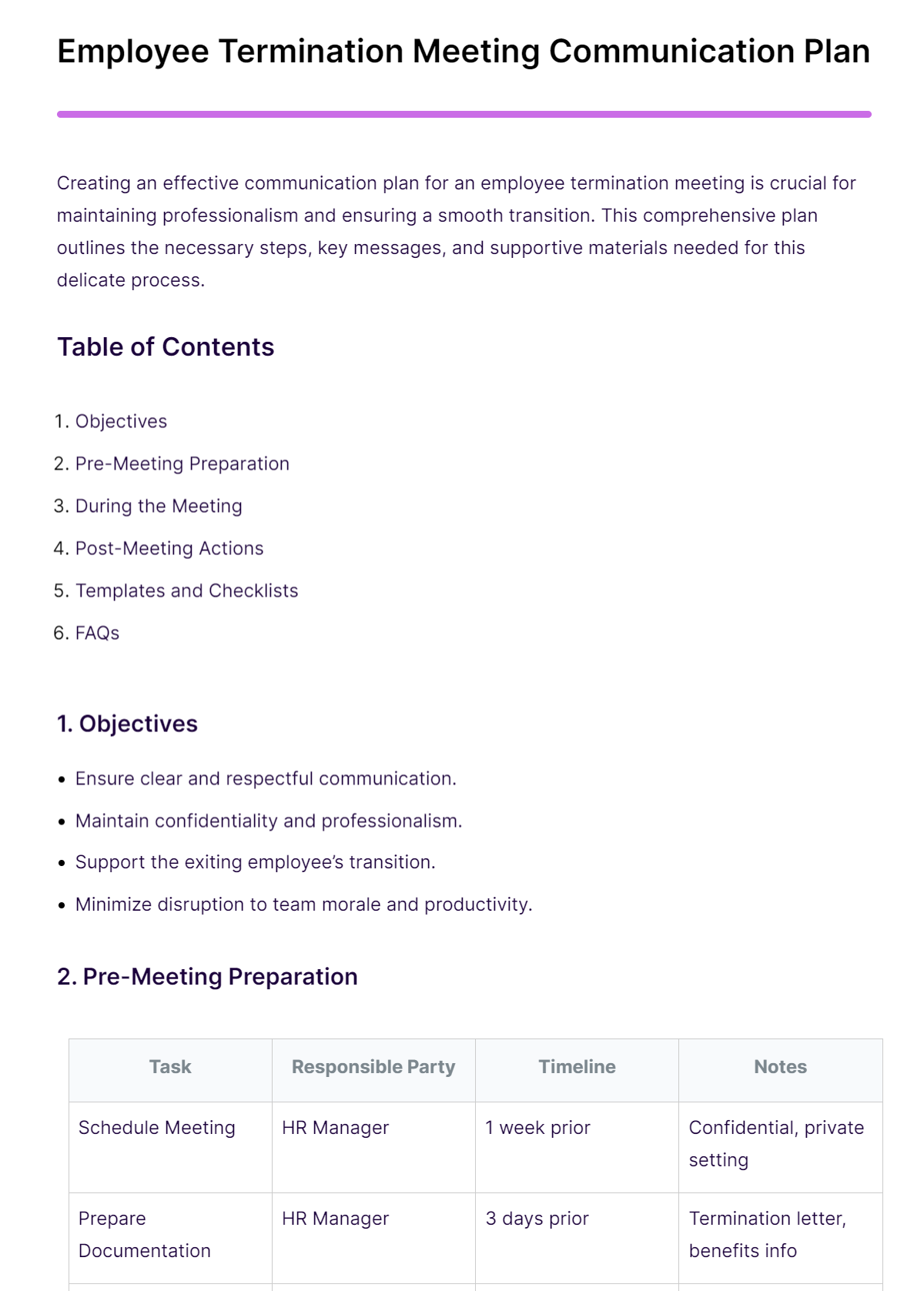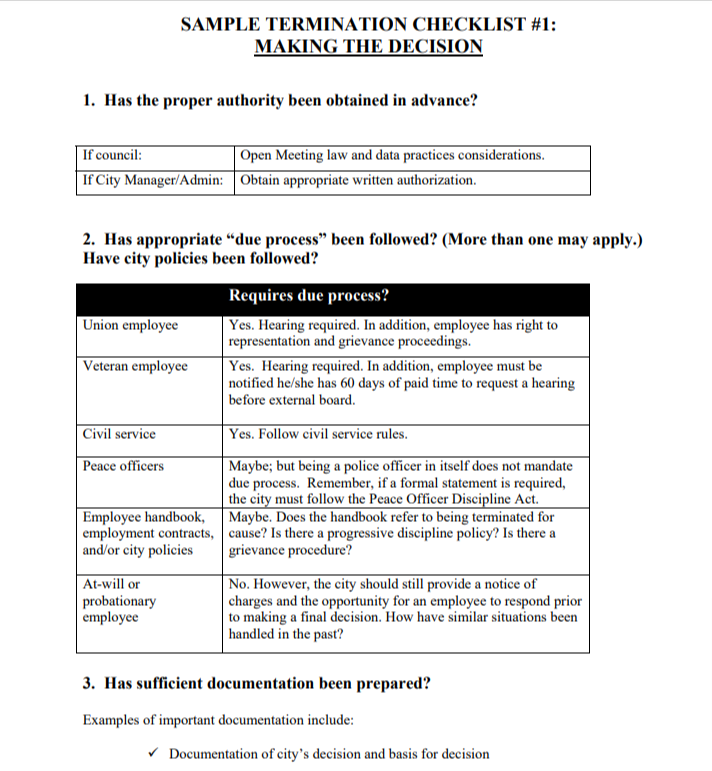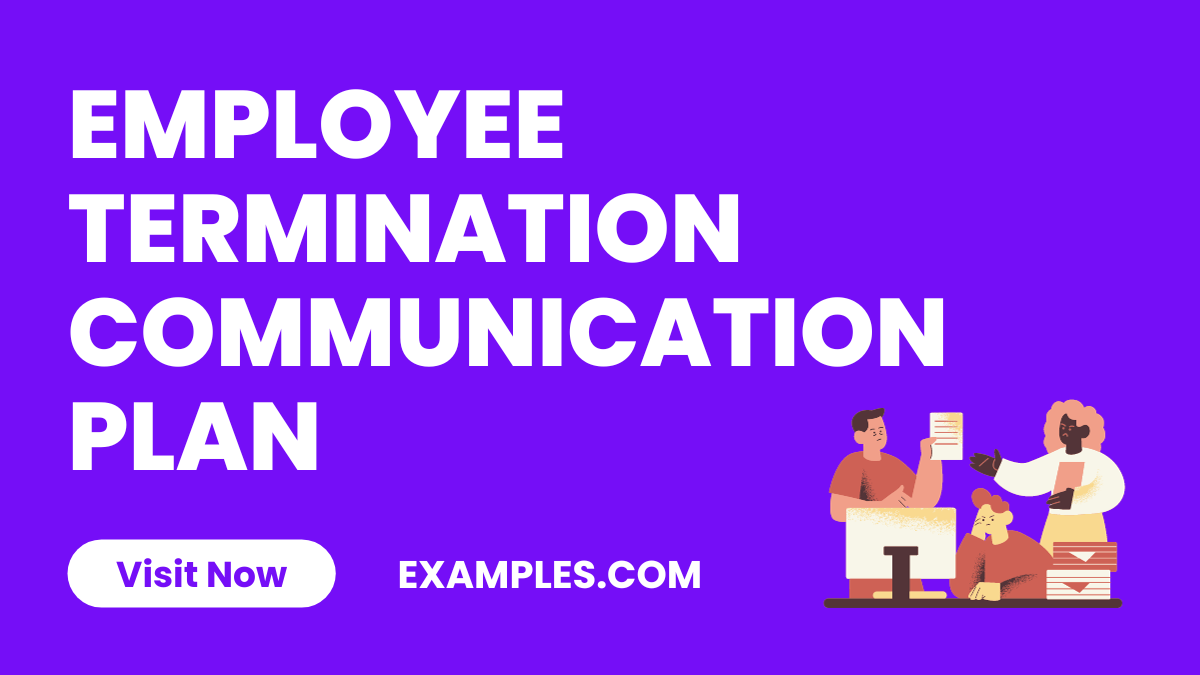5 Employee Termination Communication Plan Examples
Navigating the complexities of workplace communication, especially during sensitive scenarios like employee termination, requires a nuanced approach. Our comprehensive guide delves into the realm of Employee Termination Communication Plans, offering vital insights and practical communication examples. This guide serves as an essential resource for managers and HR professionals, providing strategies to manage these conversations with empathy and clarity. By integrating real-world examples, we illuminate the path to effective communication, ensuring both parties leave the dialogue with respect and understanding.
Download Employee Termination Communication Plan Bundle
Employee Termination Communication Plan

The Termination Communication Plan Examples provides a detailed guide on managing employee terminations. It emphasizes maintaining professionalism and empathy, ensuring legal compliance, and protecting the company’s reputation. The plan includes preparation steps like reviewing employee files and legal compliance, communication strategies for initial and team notifications, execution details such as meeting scheduling and documentation handover, and post-termination processes including support for remaining employees and exit interviews. Additional resources cover legal checklists and employee support, making it a comprehensive resource for managing terminations
Individual Employee Termination Communication Plan

The document on Individual Employee Termination Communication Plan provides a detailed guide for managing the delicate process of employee termination with a focus on clear, professional, and empathetic communication. It outlines key steps and strategies for interactions before, during, and after the termination meeting, emphasizing legal compliance, confidentiality, and sensitivity. The plan covers preparation, scripting the conversation, conducting the meeting, and post-termination follow-ups, ensuring clarity and respect for all parties involved
Employee Termination meeting Communication Plan

The document on Employee Termination Meeting Communication Plan provides a thorough guide for effectively handling the communication aspect of employee terminations. It outlines necessary steps, key messages, and supportive materials needed for a smooth and professional process. The guide covers various stages such as pre-meeting preparation, conduct during the meeting, and post-meeting actions. It includes detailed instructions, like preparing documentation and managing team communications, ensuring clarity and respect throughout the process. Additionally, templates, checklists, and FAQs are provided to assist HR professionals in managing these sensitive situations efficiently.
Employee Termination Communication Plan Checklist

mnchiefs.org
DownloadEmployee Termination Communication Plan Strategies

securityindustry.org
DownloadHow to Communicate About Employee Termination?
Communicating about employee termination is a critical aspect of workplace management, requiring a blend of empathy, clarity, and legal awareness. Here’s a detailed guide to navigating this challenging process:
Understand the Legal Framework
Before initiating any termination conversation, it’s crucial to understand the legal framework surrounding employee dismissals. Ensure that the decision to terminate complies with both federal and state labor laws to avoid potential legal issues.
Prepare Thoroughly
Preparation is key. Review the employee’s performance history, document all relevant incidents, and prepare a clear, factual explanation for the termination. This preparation helps in delivering a concise and direct message.
Choose the Right Setting and Time
The conversation should occur in a private, quiet setting where the employee feels safe to express emotions without public scrutiny. Timing is also important; ideally, choose a time that minimizes the impact on the employee and the rest of the team.
Be Clear and Empathetic
During the conversation, be clear about the reason for termination but also show empathy. Avoid using jargon or overly complex explanations. Be direct yet respectful, acknowledging the difficulty of the situation.
Focus on the Future
Help the employee look forward. Discuss next steps, such as severance packages, outplacement services, and assistance with the transition. Providing this information can ease the employee’s concerns about the immediate future.
Provide Written Documentation
Always provide written documentation of the termination, including the reasons for the decision and details about any severance package. This documentation should be clear, concise, and free of any ambiguous language.
Offer Support
Offer support during the termination process. This can include access to counseling services, assistance with job searches, or simply being available to answer any questions post-termination.
Follow-Up with the Team
After the termination, communicate with the remaining team members in a manner that respects the privacy of the terminated employee. Offer reassurance and support to the team to maintain morale and productivity.
How to Write Employee Termination Communication Plan?
Creating an effective Employee Termination Communication Plan is crucial for maintaining a professional and supportive environment during the challenging process of employee dismissal. Here’s a comprehensive guide to crafting a plan that balances legal requirements, compassion, and clarity:
Establish Clear Objectives
Begin by defining the goals of your communication plan. These should include maintaining dignity for the departing employee, ensuring legal compliance, and minimizing the impact on team morale.
Outline Legal and Policy Guidelines
Your plan must align with legal standards and company policies. Detail the legal considerations to follow, such as anti-discrimination laws, and outline any company-specific procedures that need to be adhered to during the termination process.
Develop a Communication Timeline
Design a timeline for the termination process. This should include when and how the employee will be notified, the scheduling of follow-up meetings, and the timeframe for communicating the change to the rest of the team.
Prepare Notification Templates
Draft templates for all forms of communication related to the termination, including the initial notification, follow-up emails, and announcements to the team. Ensure these templates are clear, professional, and empathetic.
Plan for Different Scenarios
Anticipate various responses from the employee and prepare accordingly. This might include a calm acceptance, a request for more details, or an emotional reaction. Having a strategy for each scenario ensures a smoother process.
Incorporate Support Resources
Include information about support services available to the employee, such as counseling, career coaching, or assistance with job searches. Providing these resources demonstrates compassion and supports the employee’s transition.
Train Managers and HR Staff
Ensure that everyone involved in the termination process is adequately trained. This includes understanding the plan, legal compliance, and how to handle difficult conversations with empathy and professionalism.
Review and Update Regularly
Regularly review and update your termination communication plan to ensure it remains compliant with current laws and effective in its approach. Incorporate feedback from previous terminations to continually improve the process.
How to Communicate Employee Termination to the Team?
Effectively communicating an employee’s termination to their team is a delicate process that requires tact, transparency, and empathy. Here’s a comprehensive guide to manage this communication effectively:
Plan the Communication
Before announcing the termination to the team, create a clear communication plan. This should include the timing of the announcement, the key messages to convey, and the approach for addressing any questions or concerns.
Ensure Legal Compliance
Before sharing any details, consult with your HR department or legal team to ensure that the communication adheres to legal and company policy guidelines, especially regarding confidentiality and privacy.
Be Honest and Direct
When communicating with the team, be as honest as the situation allows. Provide a straightforward explanation without delving into sensitive personal details. It’s important to strike a balance between transparency and respect for the privacy of the terminated employee.
Address the Impact on the Team
Acknowledge the impact the termination may have on the team. Be prepared to discuss how the employee’s responsibilities will be handled moving forward. This helps in reducing uncertainty and maintaining team productivity.
Provide Support
Offer support to your team. This could include one-on-one check-ins or providing resources for managing change and stress. Ensure that team members know where to go for additional support if needed.
Encourage Open Communication
Create a space for team members to express their feelings or concerns. Addressing issues openly can prevent the spread of rumors and misinformation and helps in maintaining team morale.
Focus on the Future
Emphasize the team’s goals and the future direction of the department or company. This helps shift the focus from the termination to the future, fostering a sense of progress and stability.
Monitor the Team’s Morale
After the announcement, keep an eye on the team’s morale. Be proactive in addressing any ongoing concerns or changes in team dynamics.
How to Managing Employee Terminations Communication Plan?
Effectively managing an Employee Termination Communication Plan is crucial in ensuring a smooth transition for both the departing employee and the remaining team. A well-managed plan respects the dignity of the individual being let go and maintains workplace morale. Here’s a comprehensive guide to managing this delicate process:
Develop a Structured Communication Plan
Begin by creating a structured communication plan. This plan should outline the steps and protocols for delivering the termination message, including who will be involved, the timing, the setting, and the follow-up process.
Coordinate with Key Departments
Collaboration with key departments like Human Resources and Legal is essential. Ensure all aspects of the termination, including legal compliance and the final settlement, are discussed and agreed upon before communicating with the employee.
Train Managers and Supervisors
Provide training for managers and supervisors on how to handle termination discussions. Focus on communication skills, legal aspects, and emotional intelligence to equip them to handle these conversations with professionalism and empathy.
Script the Conversation
Prepare a script for the termination meeting. This should include key points to cover, such as the reason for termination, any logistical details related to the employee’s departure, and information about severance and benefits.
Maintain Confidentiality
Confidentiality is paramount. Ensure that the details of the termination are only discussed with those who need to know. This protects both the company and the employee’s privacy.
Support for the Departing Employee
Offer support to the departing employee. This may include outplacement services, counseling, or assistance with job searches. Showing support can help ease the transition for the employee.
Effective Internal Communication
After the termination, communicate effectively with the remaining staff. Avoid sharing sensitive details. Focus on how the change impacts the team and the future of the department or company.
Review and Learn
Finally, review the process after its completion. Gather feedback from those involved and look for areas of improvement. Use these insights to refine future termination communication plans.
The article ” Steps to Take Before Terminating an Employee” on NSCA.org provides a detailed guide for employers on the essential steps to follow before proceeding with an employee termination. It emphasizes the importance of thorough documentation, clear communication of expectations, effective coaching, the implementation of a Performance Improvement Plan (PIP), written counseling, and legal considerations. Each step is designed to ensure a fair and well-documented process, ultimately leading to a decision that is justifiable and compliant with legal standards.
The “Deliver the Message to a Terminated Employee” on offers insightful guidance for managers tasked with conducting termination meetings. It presents various methods to approach this sensitive conversation, emphasizing the importance of delivering the message with clarity, respect, and dignity. The page highlights best practices and pitfalls to avoid, ensuring the process is handled professionally while respecting the employee’s emotions. This resource is particularly beneficial for enhancing managerial skills in difficult communication scenarios.



